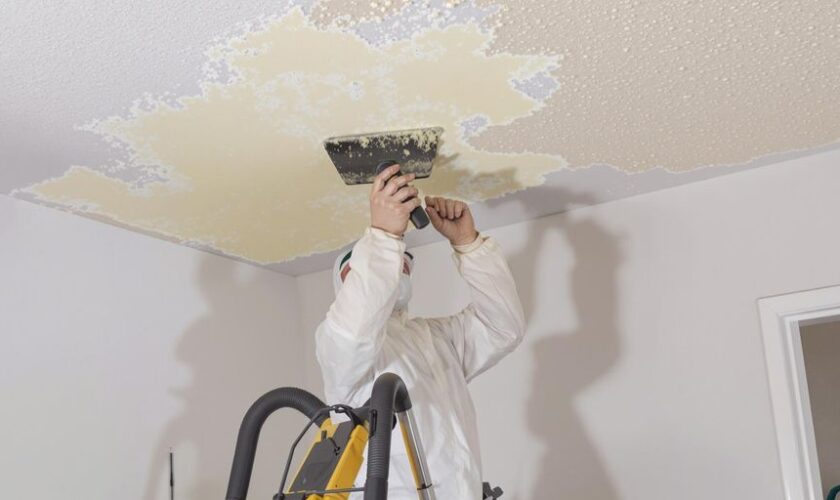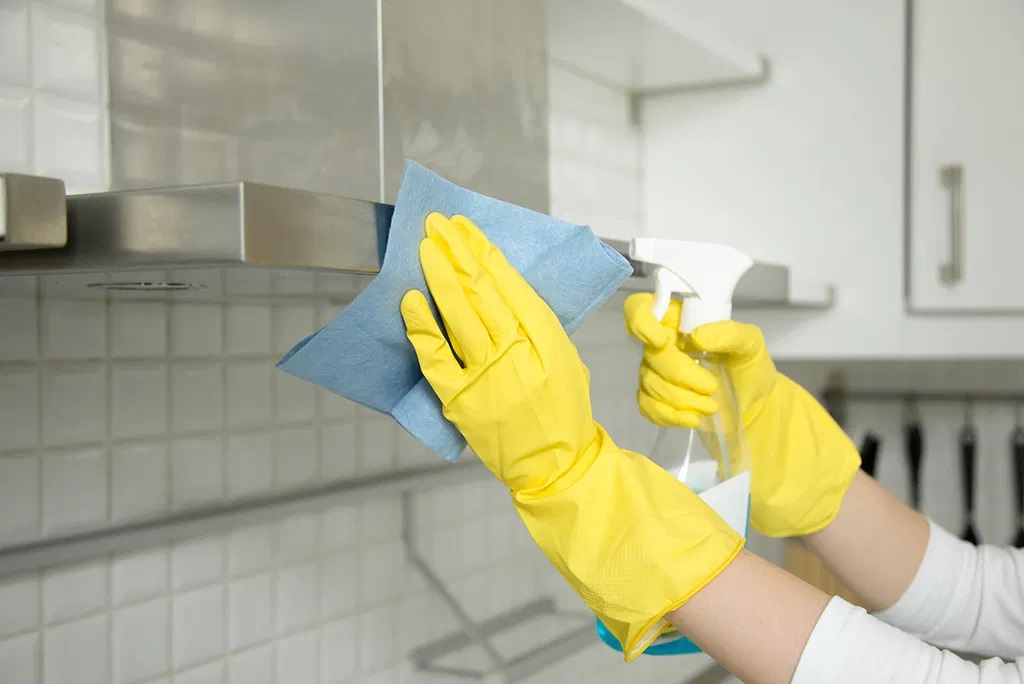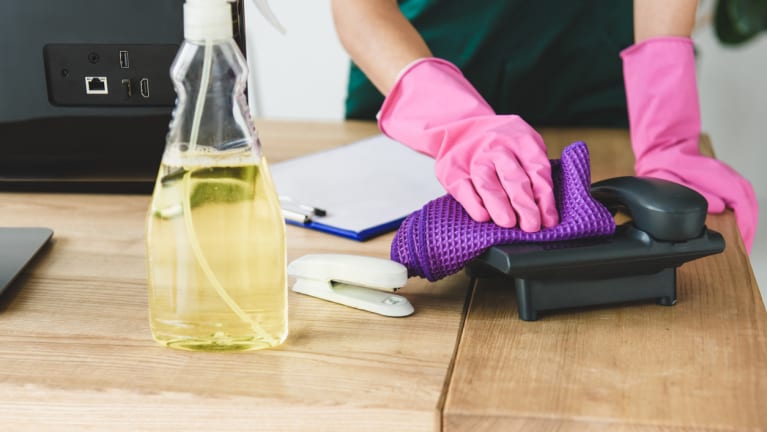Health Risks Associated with Asbestos
Asbestos exposure is a silent threat that can lead to severe health complications. Prolonged exposure to asbestos fibers is directly linked to mesothelioma, a rare cancer affecting the mesothelial cells. Mesothelioma often takes decades to manifest, making early detection incredibly challenging. Beyond mesothelioma, asbestos exposure has also been tied to other serious conditions, such as lung cancer, laryngeal cancer, and even ovarian cancer. The fibers, once inhaled or ingested, can embed themselves in body tissues, causing inflammation and scarring that may develop into life-threatening diseases over time.
Common Sources of Asbestos in Buildings
Asbestos was widely used in construction materials due to its durability and heat resistance. Common sources include insulation, roofing shingles, floor tiles, and even certain types of cement. Buildings constructed before the 1980s are especially likely to contain asbestos materials. While these materials are generally safe when intact, they become hazardous if disturbed during renovations or demolitions. Identifying these sources is the first step in mitigating the risks.
How Asbestos Becomes a Hazard
Asbestos becomes dangerous when its fibers are released into the air, often as a result of damage, wear, or improper handling. These microscopic fibers can remain airborne for extended periods, making them easy to inhale or ingest. Once inside the body, they can cause long-term damage, including chronic respiratory issues and cancer. Prolonged exposure to asbestos significantly increases the likelihood of developing severe health conditions, underscoring the importance of professional assessment and removal. Proper containment and handling are essential to prevent these fibers from becoming a hazard.
The Importance of Professional Asbestos Removal
Legal Requirements for Asbestos Handling
Handling asbestos is not just risky—it’s a regulated activity. Laws at both the federal and state levels dictate how asbestos must be managed to ensure public safety. Professional asbestos removal companies are well-versed in these regulations, from proper containment to disposal methods. Compliance with these laws is not optional; it’s mandatory to avoid serious penalties. Hiring certified experts ensures that all legal guidelines are followed, protecting property owners from potential fines or legal issues.
Why DIY Asbestos Removal Is Not Recommended
Taking on asbestos removal as a DIY project might seem like a way to save money, but it’s a dangerous gamble. Without the proper training and equipment, individuals risk exposing themselves and others to harmful asbestos fibers. Even a small mistake, like improper sealing or disposal, can lead to contamination. Professionals, on the other hand, use specialized safety measures to minimize exposure risks. The stakes are simply too high to go it alone when dealing with such hazardous material.
The Role of Certified Asbestos Specialists
Certified asbestos abatement contractors bring expertise and precision to the table. They perform thorough inspections, create detailed removal plans, and use advanced tools to ensure safe handling. Their training allows them to identify hidden asbestos sources and address them effectively. Hiring professional asbestos abatement contractors is essential for safety due to their expertise and use of specialized safety gear, including respiratory protection. By entrusting the job to certified specialists, property owners can have peace of mind knowing the process is handled with the utmost care and professionalism.
How Professionals Identify Asbestos in Properties
Inspection Techniques Used by Experts
Professionals use a combination of visual inspections and advanced tools to detect asbestos. Visual assessments often help identify materials suspected of containing asbestos, such as old insulation or ceiling tiles. Experts are trained to recognize telltale signs, including the fibrous texture and discoloration of materials, like asbestos wool insulation, which is often white or gray but may show aging effects. Sampling is another critical method, where small portions of suspected materials are carefully collected for lab testing. This ensures accurate identification without causing unnecessary disturbance.
Common Areas Where Asbestos Is Found
Asbestos can be hidden in many parts of a property. Professionals often focus on these key areas:
- Insulation materials: This includes pipe insulation and attic insulation, such as asbestos wool.
- Flooring and ceiling tiles: Older vinyl tiles and popcorn ceilings are common culprits.
- Roofing materials: Shingles and siding from earlier decades may contain asbestos.
By systematically checking these areas, experts ensure no potential source is overlooked.
The Importance of Accurate Testing
Accurate testing is vital because asbestos fibers are microscopic and cannot be identified with the naked eye. Professionals rely on certified laboratories to analyze samples. These tests confirm whether asbestos is present and, if so, in what concentration. Without proper testing, property owners may face unnecessary risks or costly remediation for materials that do not actually contain asbestos. This step is essential for creating a safe and effective removal plan.
Steps Involved in Professional Asbestos Removal
Initial Assessment and Risk Evaluation
The first step in the asbestos abatement process is a thorough inspection and evaluation of the property. Professionals assess the extent of asbestos contamination, identifying areas where the material is present. This stage involves collecting samples and conducting laboratory tests to confirm the presence of asbestos. Once the risks are evaluated, a detailed abatement plan is created to address the specific needs of the property.
Containment and Removal Procedures
Proper containment is critical to prevent asbestos fibers from spreading during removal. Specialists use plastic sheeting, sealants, and negative air pressure systems to isolate the affected areas. This step minimizes the risk of exposure to asbestos fibers, protecting both workers and occupants. After containment is secured, trained professionals carefully remove the asbestos-containing materials using specialized tools and techniques. Every action is performed under strict safety protocols to ensure compliance with regulations.
Proper Disposal of Asbestos Materials
Disposing of asbestos materials is not as simple as throwing them in the trash. Licensed disposal facilities are required for handling and processing asbestos waste. Professionals securely package the materials in labeled, airtight containers and transport them to approved disposal sites. This final step ensures the safe and legal elimination of hazardous materials, reducing the risk of future contamination. In many cases, a final clearance test is performed to verify that the property is free of asbestos hazards, as outlined in the asbestos removal process.
The Equipment and Tools Used in Asbestos Removal
Protective Gear for Asbestos Handlers
When dealing with asbestos, safety is non-negotiable. Professionals wear specialized protective gear to shield themselves from harmful fibers. This includes full-body coveralls, gloves, and sturdy boots. Respirators equipped with HEPA filters are a must to prevent inhaling airborne particles. Eye protection, such as goggles, ensures that no fibers come into contact with the eyes. This gear creates a barrier between the handler and the hazardous material, minimizing exposure risks.
Specialized Tools for Safe Removal
Removing asbestos requires precision, and experts rely on a range of tools designed for the job. Commonly used items include scraper blades, wet vacuums with HEPA filtration, and sealant sprays to encapsulate fibers. For instance, ABCO Supply offers tools like glovebags and tile popper blades that make the process safer and more efficient. These tools are specifically engineered to handle asbestos without releasing fibers into the air, ensuring a safer environment during removal.
Air Filtration Systems and Their Role
Air quality is a top priority during asbestos removal. High-efficiency air filtration systems, such as negative air machines, are set up to capture airborne fibers. These systems create a controlled airflow, pulling contaminated air through HEPA filters and releasing clean air back into the environment. This process significantly reduces the risk of asbestos exposure for both workers and nearby occupants. Additionally, spraying debris with water, as suggested in this guide, helps to suppress dust and prevent fibers from becoming airborne.
Regulations Governing Asbestos Removal
Federal Guidelines for Asbestos Management
Federal regulations provide a clear framework for handling and removing asbestos to protect public health and the environment. The Environmental Protection Agency (EPA) oversees many of these rules, including the Asbestos Hazard Emergency Response Act (AHERA), which focuses on schools, and the National Emission Standards for Hazardous Air Pollutants (NESHAP), which addresses demolition and renovation activities. These laws ensure that asbestos is managed safely and responsibly. For those looking for a detailed breakdown of these laws, a comprehensive listing of asbestos-related laws and regulations is available.
State-Specific Asbestos Removal Laws
While federal laws set the groundwork, individual states often have additional requirements. These can include specific licensing for contractors, stricter disposal protocols, or unique notification processes before beginning asbestos-related work. It’s vital to check local regulations to avoid penalties and ensure compliance.
Penalties for Non-Compliance
Failing to follow asbestos regulations can lead to serious consequences. Penalties may include hefty fines, suspension of work permits, or even legal action. Beyond the financial impact, non-compliance poses significant health risks to workers and the public. Always prioritize adherence to both federal and state laws to avoid these repercussions.
The Cost of Professional Asbestos Removal
Factors Influencing Removal Costs
The cost of professional asbestos removal can vary widely based on several key factors. First, the size of the affected area plays a significant role. Larger spaces naturally require more time and effort to address, which increases the overall expense. Second, the type of asbestos-containing material matters—removing asbestos from insulation, for example, may be more complex than removing it from flooring or siding. Third, the condition of the asbestos, whether it’s intact or already deteriorating, can impact the cost since damaged asbestos poses a higher risk and requires more stringent containment measures. Understanding these factors helps homeowners plan better for the financial commitment involved.
Why Professional Services Are Worth the Investment
Hiring certified professionals for asbestos removal may seem costly upfront, but it’s an investment in safety and long-term peace of mind. Trained specialists follow strict protocols to ensure the asbestos is removed without releasing harmful fibers into the air. Attempting a DIY approach could lead to improper handling, which increases the risk of exposure and future contamination. Additionally, professional removal often includes thorough cleanup and air quality testing, offering reassurance that the property is safe for occupants. For these reasons, the value of professional services far outweighs the risks of cutting corners.
Comparing Costs of DIY vs. Professional Removal
While DIY asbestos removal might appear cheaper at first glance, it often carries hidden costs and risks. Without the proper equipment and expertise, individuals may inadvertently expose themselves and others to harmful fibers. Moreover, legal requirements for asbestos disposal can be challenging to navigate without professional guidance. On the other hand, asbestos removal costs handled by certified specialists average $2,212, with typical ranges between $1,191 and $3,256. This price includes not only the removal but also the safe disposal of materials and compliance with all regulations. In the long run, professional removal is safer, more efficient, and ultimately more cost-effective.
The Long-Term Benefits of Professional Asbestos Removal
Improved Indoor Air Quality
One of the most significant advantages of professional asbestos removal is the dramatic improvement in indoor air quality. Asbestos fibers, when disturbed, can linger in the air and pose severe health risks if inhaled. By removing asbestos safely and thoroughly, professionals ensure that the air inside your home or workplace is free from harmful contaminants. This creates a safer environment for everyone, especially for those with respiratory conditions. Clean air is not just a luxury; it’s a necessity for healthy living.
Enhanced Property Value
Properties free of asbestos are more appealing to potential buyers and tenants. When asbestos is professionally removed, it eliminates a major red flag during property inspections. This can lead to higher market value and a quicker sale. Additionally, replacing an old, asbestos-containing roof not only boosts the property’s energy efficiency but also improves its overall appearance, making it even more attractive to prospective buyers.
Peace of Mind for Occupants
Living or working in a property with asbestos can cause constant worry about potential exposure. Professional removal eliminates this stress, allowing occupants to feel safe and secure. Knowing that the property complies with safety standards and is free of hazardous materials provides peace of mind that is hard to put a price on. Moreover, timely asbestos removal not only safeguards health but also avoids future compliance issues and unexpected costs.
Choosing the Right Asbestos Removal Company
Questions to Ask Before Hiring
When selecting an asbestos removal company, it’s important to ask the right questions to ensure they are qualified and trustworthy. Start by inquiring about their experience in handling asbestos. How many years have they been in the business? Have they managed projects similar to yours? Additionally, ask if they provide a detailed plan for the removal process. Transparency in their approach is a sign of professionalism. Don’t forget to confirm whether they carry the necessary insurance to cover any potential damages or liabilities during the job.
Certifications and Accreditations to Look For
Before hiring, verify that the company holds the required certifications and accreditations. Certified asbestos removal specialists should comply with federal and state regulations, which ensures the work is done safely and legally. Look for affiliations with recognized industry organizations or licenses that prove their expertise. These certifications not only confirm their qualifications but also demonstrate their commitment to safe practices. For instance, Renovation Pros is known for providing urgent and safe asbestos removal services, backed by their professional credentials.
Red Flags to Avoid in Contractors
Be cautious of contractors who offer unusually low estimates or promise quick results without an inspection. These can be signs of inexperience or a lack of proper equipment. Also, avoid companies that hesitate to provide references or proof of certification. A legitimate company should have no problem sharing this information. Lastly, steer clear of contractors who downplay the risks of asbestos exposure or suggest skipping essential safety measures. Trustworthy professionals prioritize your safety and follow strict protocols.
Post-Removal Procedures and Safety Measures
Verification of Complete Asbestos Removal
After asbestos removal, verifying that the process was thorough is absolutely critical. This involves detailed inspections and air quality tests to ensure no asbestos fibers remain in the environment. Proper air quality testing is not just a formality—it’s a safeguard for everyone who uses the space. For instance, air quality tests can confirm that no harmful fibers linger in the air, reducing health risks significantly. Additionally, specialists check that all insulation, lagging, and other materials contaminated by asbestos have been fully removed.
Steps to Prevent Future Contamination
Once removal is complete, steps should be taken to ensure asbestos doesn’t become a problem again. First, all affected areas should be sealed or encapsulated to prevent exposure to any remaining fibers. Second, property owners should regularly monitor the condition of materials that might still contain asbestos, especially in older buildings. Lastly, it’s wise to keep detailed records of the removal process and any follow-up actions for future reference.
Importance of Regular Property Inspections
Even after asbestos removal, regular inspections are a must. These inspections help catch any potential issues early, like the deterioration of older materials that might still contain asbestos. Hiring a professional to perform these checks ensures that any risks are identified and managed before they become a problem. Routine monitoring is not just about safety—it also provides peace of mind for property owners and occupants alike.
The Role of Asbestos Removal in Renovation Projects
Why Asbestos Testing Is Crucial Before Renovation
Before starting any renovation project, testing for asbestos is a must. Asbestos-containing materials (ACMs) can be hidden in walls, ceilings, flooring, and even old insulation. Renovation activities like drilling, cutting, or demolition can disturb these materials, releasing harmful fibers into the air. Failing to conduct proper testing can lead to significant health, legal, and financial risks. For instance, not testing for asbestos could result in costly delays or fines if hazardous materials are found mid-project. To avoid such issues, get your home tested for asbestos before any work begins, ensuring a safe and smooth renovation process.
How Professionals Coordinate with Renovation Teams
Professional asbestos removal specialists often work closely with renovation teams to ensure the project stays on track. This collaboration typically involves:
- Conducting a thorough inspection to identify asbestos materials.
- Creating a detailed plan for safe removal, minimizing disruption to the renovation timeline.
- Communicating with contractors to handle areas where asbestos is present.
This teamwork helps maintain safety while keeping the project moving forward. It also ensures compliance with regulations, so there are no unexpected setbacks.
Ensuring Compliance During Construction Activities
During renovations, strict rules govern how asbestos is handled to protect both workers and occupants. Certified removal teams follow these rules to the letter, using specialized tools and protective gear. They also implement air filtration systems to prevent contamination. Renovation teams must coordinate with asbestos specialists to ensure all activities comply with safety standards. Not following these guidelines could lead to severe penalties or health hazards. By addressing asbestos concerns early, homeowners can focus on their renovation goals without worrying about hidden dangers or regulatory issues.



